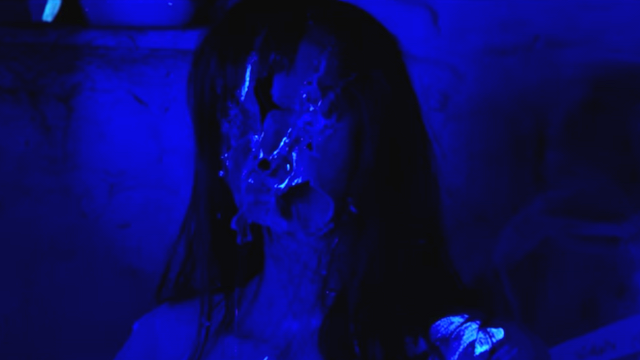Lights go off – creature appears. Lights come on – creature vanishes. At first glance, the concept seems relatively mundane, but “Lights Out” explores more than a light switch, tackling themes like mental illness and domestic abuse. With acclaimed producer James Wan (director of “The Conjuring” and “Furious 7”) helming the project, “Lights Out” goes deeper than an average summer thriller, carrying a meaningful storyline and high-wattage scares.
“Lights Out” follows a broken family, Rebecca (Teresa Palmer), a fiercely independent 20-something, her little half-brother, Martin (Gabriel Bateman) and their mother, Sophie (Maria Bello), who has been battling depression. After his father’s mysterious death, Martin has to confront a demonic entity that follows his mentally unstable mother. The creature’s name is Diana (Alicia Vela-Bailey) and she haunts Sophie when Sophie is at her worst – the kind of imaginary friend you don’t want hanging around. Rebecca and Martin, with assistance from Rebecca’s boyfriend Bret (Alexander DiPersia), mend their family bond as they try to help Sophie overcome her depression and Diana.
In the film, Diana appears to be capable of causing physical harm to people. In a real-life context, however, Diana is a figurative representation of Sophie’s inner demons and depression. By illustrating the physical struggle between a family and depression, the film shows, in an exaggerated manner, what depressed people and their families face. Not content to exclusively torture Sophie, Diana persistently haunts Martin and Rebecca. Martin’s compassion for his mother never wavers, but Rebecca’s initial willingness to abandon her mother only makes Sophie’s depression worse. This makes Diana stronger, hurting Martin and Sophie. The harm inflicted – presumably by Diana – on Sophie’s children prompts audience members to consider if Diana is actually real or if Sophie herself is abusing her children.
By weaving this social commentary into the film, writer Eric Heisserer makes the characters more relatable than most that appear in the horror genre. In “Lights Out,” characters are anything but one-dimensional. Their motivations and inner conflicts are revealed as they help each other and rebuild their crumbling family.
By using light and shadow effectively and leaving little to CGI, “Lights Out” is suspenseful and eerie without unnecessary gore. The shaky camera, canted shots and musical crescendos get hearts racing; the contrast of dark and light on the big screen is enough to make viewers thankful for the small lights on the theatre floor. Humor comes from Bret, who always manages to scramble away just in time. He acts as a grounding point in the story – the outsider looking in, letting the family know they need to heal. Without him, the audience wouldn’t have a breather between rapid-fire scares and the film would lack the compassion that separates it from all-scare-no-plot thrillers.
Grounded by dark underlying themes, “Lights Out” is a pleasant surprise. Bello’s diluted emotions, in contrast with the intensity of Palmer’s, make the wounds seem deeper and Sophie’s depression more heartbreaking, leading us to a disturbing ending that’s fitting, yet slightly unsatisfying. Even after the lights came on in the theatre, “Lights Out” kept me questioning what I should really be scared of when I turn off the lights.
Contact Liz Ketcham at lgketcham ‘at’ gmail.com
